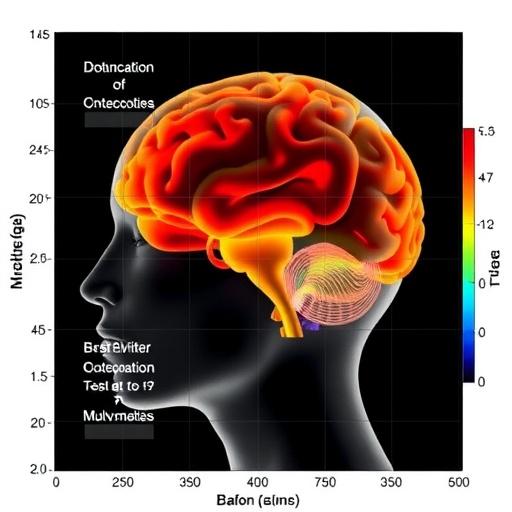In an era marked by rapid technological advancements and the escalating global burden of neurocognitive disorders (NCDs), researchers have unveiled a novel tool that could revolutionize screening practices in primary healthcare. A recent study conducted by Yu Y., Zhang S., Li H., and colleagues has introduced a sophisticated Bayesian network model specifically designed for the digital screening of neurocognitive disorders within the Chinese adult population. This model holds promise for widespread clinical applications, especially in leveraging electronic health records (EHRs) to accurately identify individuals at risk with unprecedented efficiency and precision.
Neurocognitive disorders, encompassing a range of debilitating conditions defined by mental status changes due to brain diseases, injuries, or systemic health issues, are increasingly recognized as a critical global public health challenge. Classified under ICD-10 codes F00 to F09, these disorders manifest cognitive impairments that significantly impact quality of life, posing immense social and economic strains on healthcare systems worldwide. Despite ongoing efforts, early detection remains a key barrier, often hindered by resource limitations and the absence of efficient large-scale screening tools, particularly across diverse populations.
The study leverages a vast dataset derived from the Cheeloo Whole Lifecycle eHealth Research-based Database, spanning 2015 to 2017 and encompassing over 1.6 million adults from multiple cities in Shandong Province, China. From this extensive cohort, a subset of 4,518 individuals diagnosed with neurocognitive disorders was identified to construct and validate the proposed model. Participants were meticulously allocated into training and validation sets based on geographic distribution, ensuring robustness and generalizability of the findings across different regional demographics.
At the core of this research lies the Bayesian network model, a probabilistic graphical approach that captures conditional dependencies among a multitude of variables, offering a powerful means to model complex biomedical phenomena. The researchers undertook a rigorous variable selection process, beginning with univariate logistic regression analyses to identify candidate predictors. Gender was retained as a foundational demographic variable alongside the top 30 explanatory factors that demonstrated the highest coefficient of determination in relation to NCD status, culminating in a multidimensional model framework comprising 31 variables in total.
The structural foundation of the Bayesian network was optimized using the Tabu search algorithm—a heuristic method known for efficient exploration of complex model spaces—guided by the Bayesian Information Criterion (BIC). This technique allowed the identification of the most parsimonious network structure, accurately representing the interrelations between predictors and the NCD outcome. Parameter estimation was subsequently achieved through maximum likelihood estimation, ensuring that the probabilistic parameters reflected the observed data distribution with high fidelity.
One of the pivotal findings revealed that out of the myriad variables included, eight maintained direct connections to the neurocognitive disorders node within the Bayesian network structure. This highlights the model’s ability to discern key factors with direct influence on disease risk, offering interpretability beyond conventional black-box classifiers. Such insights pave the way for understanding disease mechanisms and tailoring intervention strategies that target these influential predictors.
The predictive performance of the Bayesian network was rigorously assessed through multiple validation metrics. The area under the receiver operating characteristic curve (AUC) reached 0.849 in the training set, 0.821 in the testing set, and 0.800 upon external validation, underscoring its strong discriminative capacity. Further, calibration curves demonstrated excellent agreement between predicted probabilities and observed outcomes, reinforcing the model’s reliability. Decision curve analysis underscored its clinical utility, suggesting that its deployment could improve screening accuracy and resource allocation in real-world settings.
Importantly, the study also addressed the perennial challenge of missing data, which frequently plagues large-scale electronic health datasets. Through sensitivity analyses introducing random missingness, the Bayesian network model exhibited robust performance with only a moderate decline in AUC to 0.791. Such resilience indicates its practical applicability in clinical environments where incomplete data are common, highlighting an advantage over traditional multivariable logistic regression models often sensitive to missingness.
This research represents a significant leap forward in harnessing advanced machine learning methodologies tailored to healthcare contexts, particularly in regions where large EHR systems are increasingly accessible. The incorporation of demographic and a wide spectrum of clinical variables into a unified interpretative network empowers primary healthcare practitioners to identify neurocognitive disorder risks more efficiently and with greater precision, facilitating timely interventions.
Moreover, the Bayesian network model serves not merely as a predictive tool but also as a framework for uncovering underlying probabilistic relationships among risk factors. Such transparency is paramount in clinical decision-making, where understanding the contributions and interactions of variables informs risk stratification, patient counseling, and personalization of care pathways.
As the global population ages and neurocognitive disorders become increasingly prevalent, scalable digital screening approaches like this Bayesian network model could alleviate growing healthcare burdens. The model’s adaptability to large-scale EHR data promises cost-effective and rapid risk assessment capabilities, crucial for early diagnosis and prompt management that ultimately improve patient outcomes and reduce systemic costs.
Looking ahead, integration of this model into healthcare information systems could transform routine screening—enabling clinicians to sift through complex patient data automatically and flag at-risk individuals for further evaluation. The study sets a benchmark for the development of data-driven, evidence-based digital health tools and paves the way for similar approaches in other neurological and psychiatric disorders.
In conclusion, the study by Yu et al. represents a milestone in neurocognitive disorder screening, marrying cutting-edge Bayesian network methodologies with expansive clinical datasets to craft a robust, interpretable, and clinically viable prediction model. Their work exemplifies the intersection of artificial intelligence and medicine, illuminating a path toward enhanced disease detection and personalized healthcare strategies tailored to the needs of large, diverse populations.
Subject of Research: Neurocognitive disorder screening using Bayesian network modeling based on electronic health record data in the Chinese adult population.
Article Title: A bayesian network model for neurocognitive disorders digital screening in Chinese population: development and validation study
Article References:
Yu, Y., Zhang, S., Li, H. et al. A bayesian network model for neurocognitive disorders digital screening in Chinese population: development and validation study. BMC Psychiatry 25, 760 (2025). https://doi.org/10.1186/s12888-025-07189-1
Image Credits: AI Generated
DOI: https://doi.org/10.1186/s12888-025-07189-1




